19 Common Types of Sparrows in Michigan (With Pictures)
Last Updated on
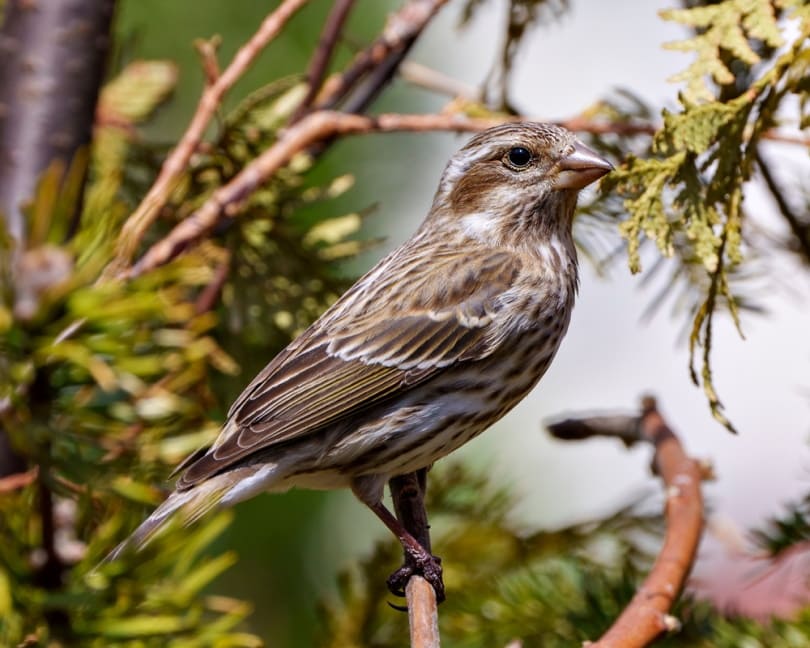
There is no shortage of wildlife in Michigan, and when it comes to birds, sparrows are found all over the state. From the Upper Peninsula to the Lower Peninsula, there are dozens of sparrows that call Michigan home. If you’ve got a few of these birds on your birdwatching list, keep reading to learn more about each one, and maybe even find a few more that you’d like to spot!

The 19 Types of Sparrows in Michigan
1. House Sparrow (Passer domesticus)
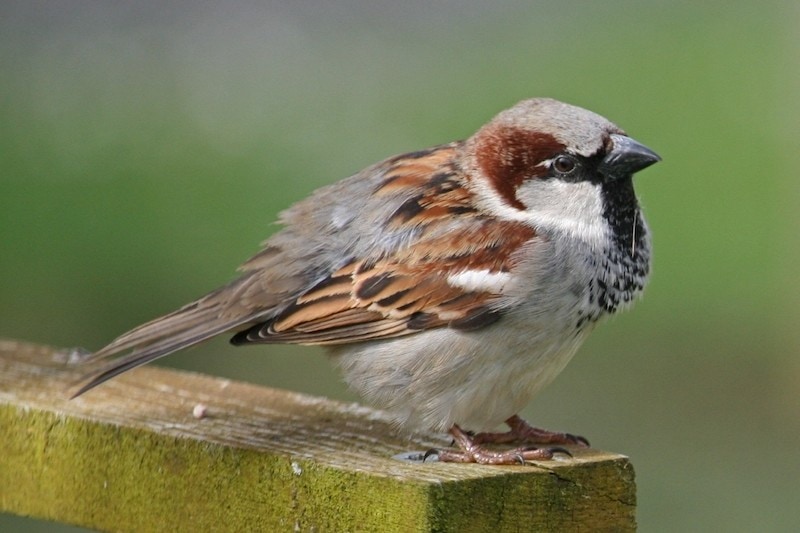
| Scientific name: | Passer domesticus |
| Length: | 5.9–6.7 inches |
| Weight: | 0.9–1.1 ounces |
| Wingspan: | 7.5–9.8 inches |
House Sparrows are one of the most common types of sparrows that you will find in the Wolverine State. They stay here all year long—yes, even during summer. In fact, they are now one of the most common birds in all of North America.
These birds have gray and brown heads with white cheeks and a black bib. However, females are brown all over and don’t have the same black bib as the males.
2. Song Sparrow (Melospiza melodia)
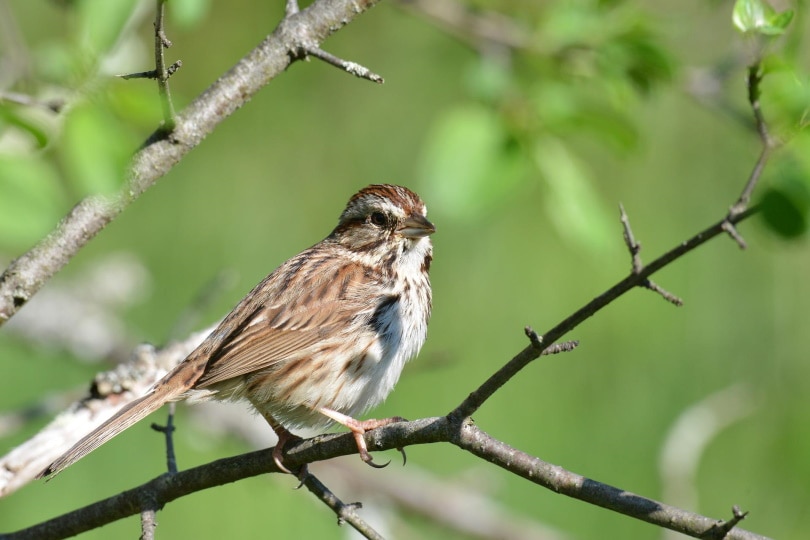
| Scientific name: | Melospiza melodia |
| Length: | 4.7–6.7 inches |
| Weight: | 0.4–1.9 ounces |
| Wingspan: | 7.1–9.4 inches |
Song Sparrows are not as exciting to look at as many other sparrows, but they are still a common bird in Michigan that is worth mentioning. They get their name due to their almost constant songs that they use to attract mates. They live in the northern UN all year, although some will migrate south for the winter.
3. Swamp Sparrow (Melospiza georgiana)
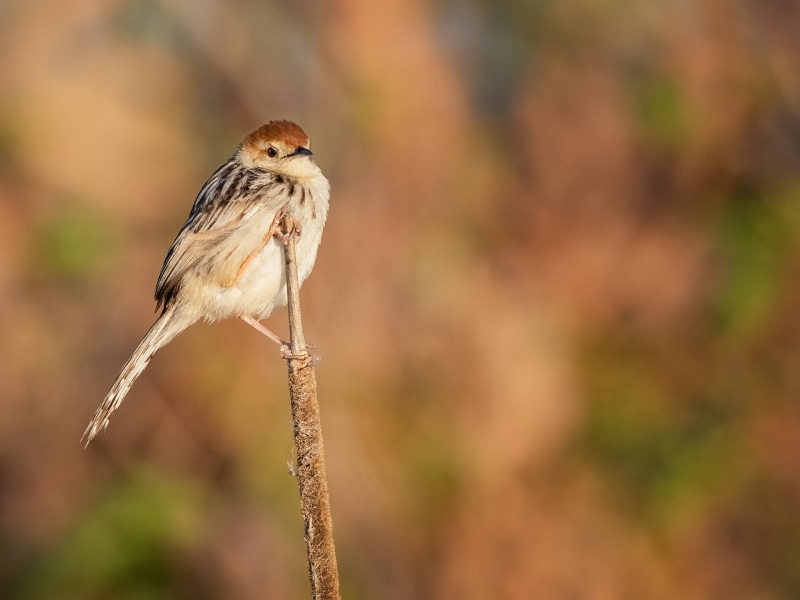
| Scientific name: | Melospiza georgiana |
| Length: | 4.7–5.9 inches |
| Weight: | 0.5–0.8 ounces |
| Wingspan: | 7.1–7.5 inches |
Swamp Sparrows have dark brown streaks on their back with rusty-colored crowns and wings. They are more present in the eastern US, although they can also be found in Canada and the Central US. Find them hanging out in wetlands, swamps, bogs, and marshes.
4. Chipping Sparrow (Spizella passerina)
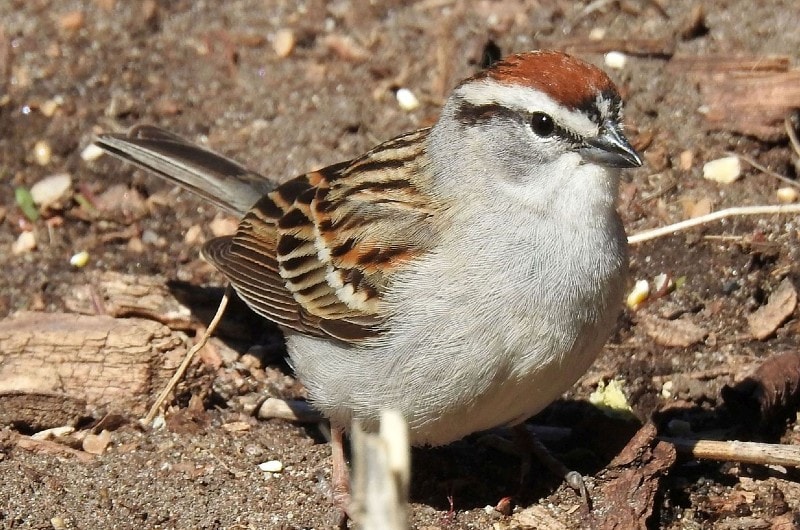
| Scientific name: | Spizella passerina |
| Length: | 4.7–5.9 inches |
| Weight: | 0.4–0.6 ounces |
| Wingspan: | 8.3 inches |
Chipping Sparrows have slender bodies with long tails. They also have grayish bellies with brown and black-streaked backs. They also sport a rusty crown and black-ringed eyes. Their colors become even more subdued in winter.
While these birds do spend their summers breeding in the US and Canada, they prefer to fly to Florida or Mexico during colder weather.
5. Savannah Sparrow (Passerculus sandwichensis)
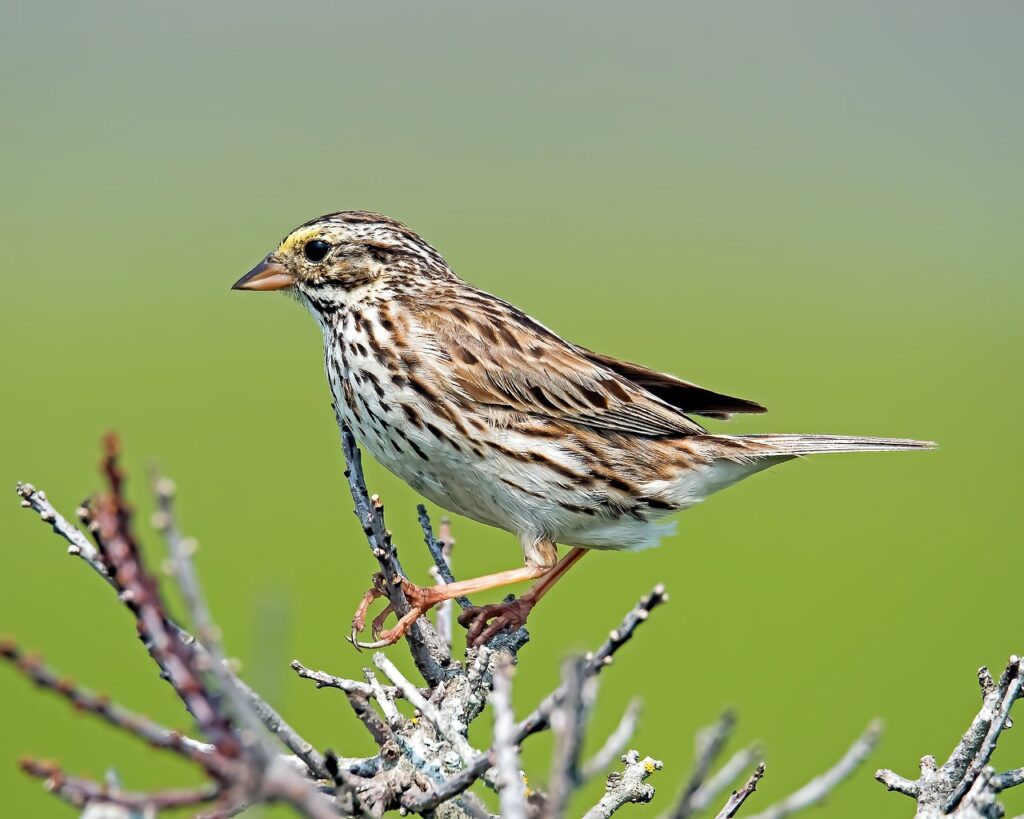
| Scientific name: | Passerculus sandwichensis |
| Length: | 4.3–5.9 inches |
| Weight: | 0.5–1.0 ounces |
| Wingspan: | 7.9–8.7 inches |
If you’re lucky enough to get close to this bird, you will likely notice that they have a distinctive yellow patch by its eyes. However, the rest of their coloring is similar to most other sparrows. They are most commonly found spending their time on the ground in open areas like grasslands while foraging for spiders, insects, and seeds.
6. Eastern Towhee (Pipilo erythrophthalmus)
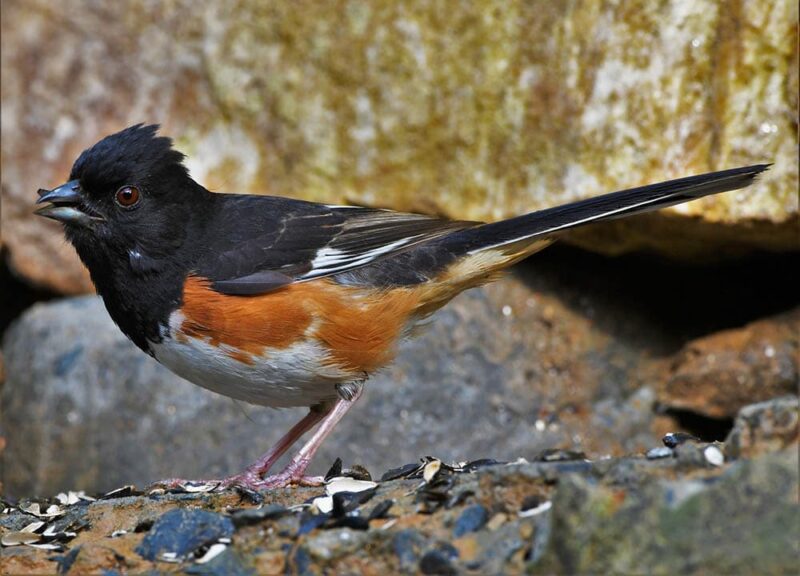
| Scientific name: | Pipilo erythrophthalmus |
| Length: | 6.8–8.2 inches |
| Weight: | 1.1–1.8 ounces |
| Wingspan: | 7.9–11.0 inches |
Yet another sparrow that you’ll spot in Michigan is the Eastern Towhee. These are large sparrows that breed in Michigan starting in mid-March and leave for warmer weather around November. They are about the size of a Robin and have black heads, throats, and backs with reddish sides and tails.
7. Field Sparrow (Spizella pusilla)
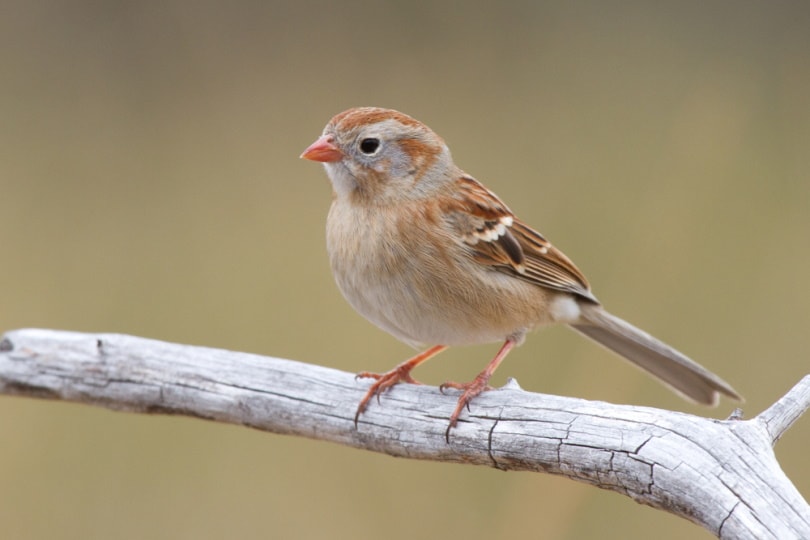
| Scientific name: | Spizella pusilla |
| Length: | 4.7–5.9 inches |
| Weight: | 0.4–0.5 ounces |
| Wingspan: | 7.9 inches |
Field Sparrows are another type of sparrow that is very common in Michigan. These birds have small, slender bodies with brown and black streaks and gray undersides. However, they also sport a red crown and pink bill. They remain in the Eastern US all year, but those living in the Midwest often migrate south for winter.
8. Vesper Sparrow (Pooecetes gramineus)

| Scientific name: | Pooecetes gramineus |
| Length: | 5.1–6.3 inches |
| Weight: | 0.7–1.0 ounces |
| Wingspan: | 9.4 inches |
These birds are not as common as other sparrows in Michigan, so consider yourself lucky if you spot one. Vesper Sparrows are quite large. They are mostly brown on their backs with white bellies and spend their summers breeding in northern parts of the US.
9. Clay-Colored Sparrow (Spizella pallida)
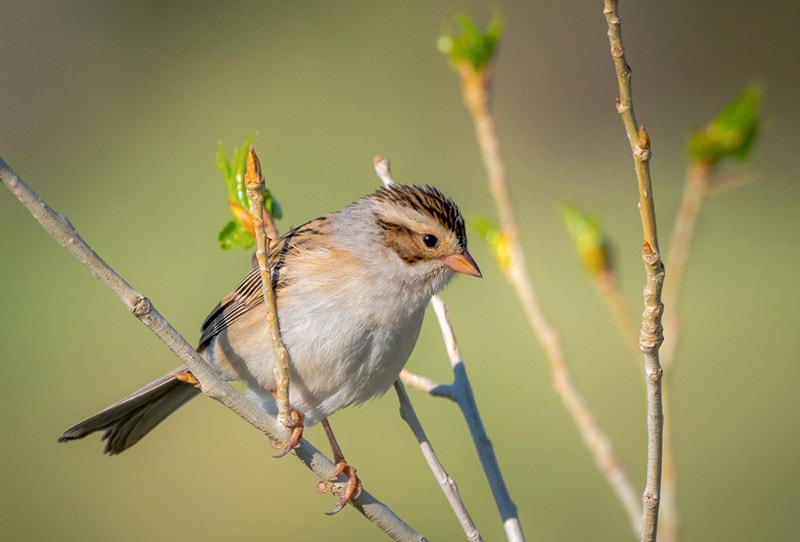
| Scientific name: | Spizella pallida |
| Length: | 5.1–6.0 inches |
| Weight: | 0.42 ounces |
| Wingspan: | 7.5 inches |
These birds are not very common in Michigan. However, they can sometimes be found here during the breeding season, which lasts from mid-April to November. These are small and plain birds that usually reside around the Great Plains. They do have distinctive head markings, though, which set them apart from other sparrows in the country.
10. Dark-Eyed Junco (Junco hyemalis)

| Scientific name: | Junco hyemalis |
| Length: | 5.5–6.3 inches |
| Weight: | 0.6–1.1 ounces |
| Wingspan: | 7.1–9.8 inches |
You’ve likely already spotted the Dark-Eyed Junco without even knowing it. These are very common birds in Michigan. They are a type of sparrow with coloring that you don’t normally see: slate. These birds are often found in open and partially wooded areas, but they can also be seen foraging on the grounds for seeds and insects.
11. Grasshopper Sparrow (Ammodramus savannarum)

| Scientific name: | Ammodramus savannarum |
| Length: | 4.3–4.5 inches |
| Weight: | 0.5–0.7 ounces |
| Wingspan: | 7.9 inches |
The Grasshopper Sparrow is another rarity in Michigan, although not unheard of. These are very tiny birds that are best known for their distinctive orange and yellow stripes above their eyes. However, they look similar to most other sparrows in every other way.
12. Henslow’s Sparrow (Centronyx henslowi)

| Scientific name: | Centronyx henslowi |
| Length: | 4.75–5.25 inches |
| Weight: | 0.5 ounces |
| Wingspan: | 7.0–7.5 inches |
The Henslow’s Sparrow is a professional at blending in with their surroundings. They have greenish faces with black stripes and pale chests that make them perfectly camouflage with their native environments. While it is hard to tell the difference between sexes, the juveniles are usually paler with fewer streaks on them. Find them hanging out in wet and weedy grasslands.
13. American Tree Sparrow (Spizelloides arborea)

| Scientific name: | Spizelloides arborea |
| Length: | 5.5 inches |
| Weight: | 0.5–1.0 ounces |
| Wingspan: | 9.4 inches |
Unlike many other sparrows on the list, the American Tree Sparrow is a winter bird for Michigan. They arrive around mid-September and usually stay until June. However, April and November are the best months to spot them. When the weather starts to warm, they head north to Canada and even into Alaska.
14. Fox Sparrow (Passerella iliaca)

| Scientific name: | Passerella iliaca |
| Length: | 5.9–7.5 inches |
| Weight: | 0.9–1.6 ounces |
| Wingspan: | 10.5–11.4 inches |
Although some species are darker brown and gray, the Fox Sparrow is different in that it is named after its fox-red coloring. The red streaks of this bird can be seen on its chest. Plus, these birds are a bit chunkier than other sparrows. You’ll usually spot them in wooded areas, undergrowth, and brush while kicking up leaf litter in search of food.
15. White-Throated Sparrow (Zonotrichia albicollis)

| Scientific name: | Zonotrichia albicollis |
| Length: | 6.3–7.1 inches |
| Weight: | 0.8–1.1 ounces |
| Wingspan: | 7.9–9.1 inches |
Spot the White-Throated Sparrow in Michigan during the spring and fall migrations from April to May and September to November. Thanks to their name, you likely already know that they have a bright white throat. You can also identify them by the yellow between their eyes and the bill. Find them on the ground of forests, woods, and along the edges of wooded areas with their flocks.
16. White-Crowned Sparrow (Zonotrichia leucophrys)

| Scientific name: | Zonotrichia leucophrys |
| Length: | 5.9–6.3 inches |
| Weight: | 0.9–1.0 ounces |
| Wingspan: | 8.3–9.4 inches |
Similar to the White-Throated Sparrow, the White-Crowned Sparrow also has a white patch, although it is on the top of its head along with bold black stripes. These sparrows often breed in Alaska and Canada before heading south for the winter. However, some remain in the mountains of the Western US all year long.
17. Lincoln’s Sparrow (Melospiza lincolnii)

| Scientific name: | Melospiza lincolnii |
| Length: | 5.1–5.9 inches |
| Weight: | 0.6–0.7 ounces |
| Wingspan: | 7.5–8.7 inches |
The Lincoln’s Sparrow is a medium-sized bird that is mainly gray but with a few streaks of brown in its wings and chest. Their heads are also a bit more pointed than other sparrow species. They often breed in Canada and the Western US, but they tend to migrate south for the winter. You can find a Lincoln’s Sparrow eating weeds in grasses during winter and foraging for insects in the spring and summer.
18. Harris’s Sparrow (Zonotrichia querula)

| Scientific name: | Zonotrichia querula |
| Length: | 6.7–7.9 inches |
| Weight: | 0.9–1.7 ounces |
| Wingspan: | 10.6 inches |
The Harris’s Sparrow is a near-threatened species. Although it is rare to spot them in Michigan, it isn’t unheard of. Especially since they are usually here during their fall migration in October
The Harris’s Sparrow has a black face and bib with brown-streaked bodies and pale bellies. Their bills are pink. Find them in fields searching for seeds, fruits, insects, and cowberries.
19. LeConte’s Sparrow (Ammospiza leconteii)

| Scientific name: | Ammospiza leconteii |
| Length: | 4.7–5.1 inches |
| Weight: | 0.4–0.6 ounces |
| Wingspan: | 6.3–7.1 inches |
These birds are extremely rare to see in Michigan. But hey, maybe that piques your curiosity even more. The LeConte’s Sparrow is most likely to be spotted in Michigan from April to mid-November. They have a dull orange coloring with black streaks and wings. However, their belly is white with a pale orange spot across their chests. They might also have gray patches on their cheeks with dark lines around their eyes.

Conclusion
While there are plenty of sparrows to see in Michigan, you’re going to have a hard time finding them if you don’t know what you’re looking for—especially for the rarer ones. Hopefully, this article has given you a few more details about each of the sparrows that visit or reside in Michigan throughout the year, and you can cross a few of them off your birdwatching list soon.
Featured Image Credit: Rejean Bedard, Shutterstock
Table of Contents
- The 19 Types of Sparrows in Michigan
- 1. House Sparrow (Passer domesticus)
- 2. Song Sparrow (Melospiza melodia)
- 3. Swamp Sparrow (Melospiza georgiana)
- 4. Chipping Sparrow (Spizella passerina)
- 5. Savannah Sparrow (Passerculus sandwichensis)
- 6. Eastern Towhee (Pipilo erythrophthalmus)
- 7. Field Sparrow (Spizella pusilla)
- 8. Vesper Sparrow (Pooecetes gramineus)
- 9. Clay-Colored Sparrow (Spizella pallida)
- 10. Dark-Eyed Junco (Junco hyemalis)
- 11. Grasshopper Sparrow (Ammodramus savannarum)
- 12. Henslow’s Sparrow (Centronyx henslowi)
- 13. American Tree Sparrow (Spizelloides arborea)
- 14. Fox Sparrow (Passerella iliaca)
- 15. White-Throated Sparrow (Zonotrichia albicollis)
- 16. White-Crowned Sparrow (Zonotrichia leucophrys)
- 17. Lincoln’s Sparrow (Melospiza lincolnii)
- 18. Harris’s Sparrow (Zonotrichia querula)
- 19. LeConte’s Sparrow (Ammospiza leconteii)
- Conclusion
About the Author Hallie Roddy
Hallie is a proud nature and animal enthusiast and has been for as long as she can remember. She attributes her passion for the environment and all its creatures to her childhood when she was showing horses on weekends and spending her weeknights devoting her attention to her pets. When Hallie isn’t using her degree in English with a writing specialization to spread informative knowledge on pets and animals, you can find her snuggled up on the couch reading books or watching nature documentaries with her own pets.
Related Articles:
Monocular vs Telescope: Differences Explained (With Pictures)
10 Types of Hummingbirds in Arkansas (With Pictures)
8 Types of Hummingbirds in Nebraska (With Pictures)
5 Types of Hummingbirds in Idaho (With Pictures)
3 Types of Hummingbirds in Mississippi (With Pictures)
8 Types of Hummingbirds in Kansas (With Pictures)
5 Types of Hummingbirds in West Virginia (With Pictures)
5 Types of Hummingbirds in Ohio (With Pictures)
